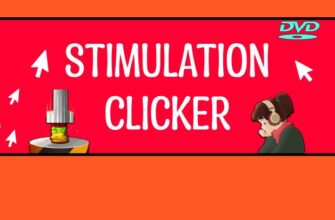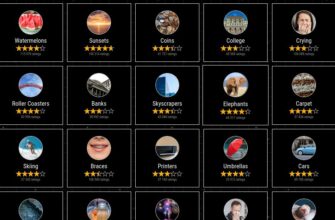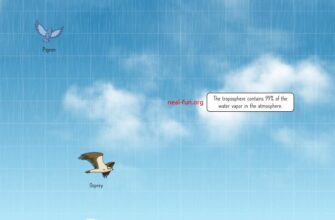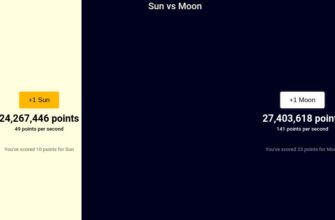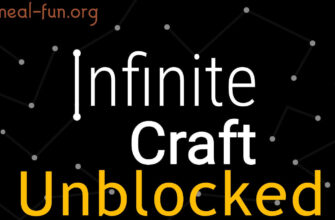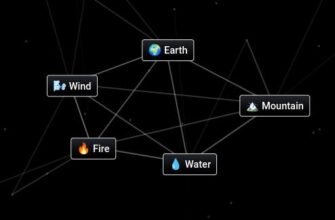The Size of Space by Neal Fun is an interactive, visually captivating experience that takes viewers on a journey through the vastness of the universe. Created to give a sense of scale and perspective, this presentation allows users to explore the size of various objects in the cosmos, from the tiniest particles to the largest galaxies. Through intuitive and engaging graphics, users can zoom in and out, gaining an understanding of the relative sizes and distances between different celestial bodies.
Starting with subatomic particles like quarks and neutrons, The Size of Space gradually expands to larger scales, showcasing molecules, cells, and everyday objects. As users continue their journey, they encounter progressively larger entities such as mountains, planets, stars, and finally, colossal galaxies and the observable universe itself. Each step of the way is accompanied by informative descriptions that provide context and fascinating facts about the objects being viewed.
Designed for both educational and entertainment purposes, The Size of Space is suitable for all age groups. It is a valuable tool for students, educators, and anyone with an interest in astronomy, physics, and the natural world. By offering a tangible sense of the immense scale of the universe, this interactive experience encourages curiosity and a deeper appreciation for the wonders of the cosmos.
The project combines scientific accuracy with stunning visual representations, making complex concepts accessible and engaging. Whether you are a seasoned astronomer or a curious novice, The Size of Space offers a unique and enlightening exploration of our universe’s incredible diversity and magnitude.
In the vast expanse of the cosmos, understanding the scale and distance between celestial bodies can be a daunting task. Neal.fun’s The Size of Space offers a unique solution to this challenge by providing an interactive visualization that allows users to explore the universe’s immensity from the comfort of their own screens. This innovative web-based tool uses engaging visuals and dynamic zooming features to bring the abstract concept of space into a more comprehensible perspective.
Understanding the Scale
The Size of Space begins its journey on Earth, gradually zooming out to reveal the staggering distances between various celestial objects. As users move through the tool, they first encounter familiar sights like the solar system, then transition to more distant stars, galaxies, and ultimately to the edge of the observable universe. This progressive zoom out helps users appreciate the relative sizes and separations between different cosmic structures, from the tiny particles that make up our world to the vast, sprawling galaxies that populate the universe.
Educational Value
One of the most compelling aspects of The Size of Space is its educational potential. The interactive nature of the tool makes it an invaluable resource for both educators and students. By visualizing the distances and sizes involved, it helps demystify complex astronomical concepts. Teachers can incorporate it into their lessons to provide students with a tangible sense of scale, while students can use it to explore and understand the vastness of space in an engaging manner. The tool’s ability to visually represent these concepts makes it a powerful complement to traditional educational resources.
User Experience and Accessibility
Navigating The Size of Space is straightforward. Users can interact with the tool using both desktop and mobile devices, making it accessible to a broad audience. The interface allows for smooth zooming and provides informative labels and explanations at each stage of the zoom-out process. This ensures that users not only see the scale of the universe but also gain insight into the significance of each level they explore.
FAQ about The Size of Space by Neal.fun
The Size of Space is an interactive web-based experience created by Neal.fun. It allows users to explore the vastness of the universe by zooming out from Earth to the edge of the observable universe. The experience uses visuals and scales to demonstrate the immense distances between celestial objects, from the smallest particles to the largest known structures in the cosmos. It provides an engaging and educational way to understand the relative sizes and distances of various astronomical entities.
Conclusion
The Size of Space by Neal.fun is more than just a digital curiosity; it’s a remarkable educational tool that brings the grandeur of the universe to life. By offering a visual and interactive means of exploring the cosmos, it helps bridge the gap between abstract astronomical concepts and tangible understanding. Whether you’re a student, educator, or simply a curious mind, this interactive experience provides a profound and engaging way to grasp the scale of the universe. Explore the vastness of the universe with The Size of Space by Neal.fun. This interactive tool offers a captivating visual journey from Earth to the edge of the observable universe, making complex astronomical concepts accessible and engaging. Ideal for educational purposes and curious minds alike.

